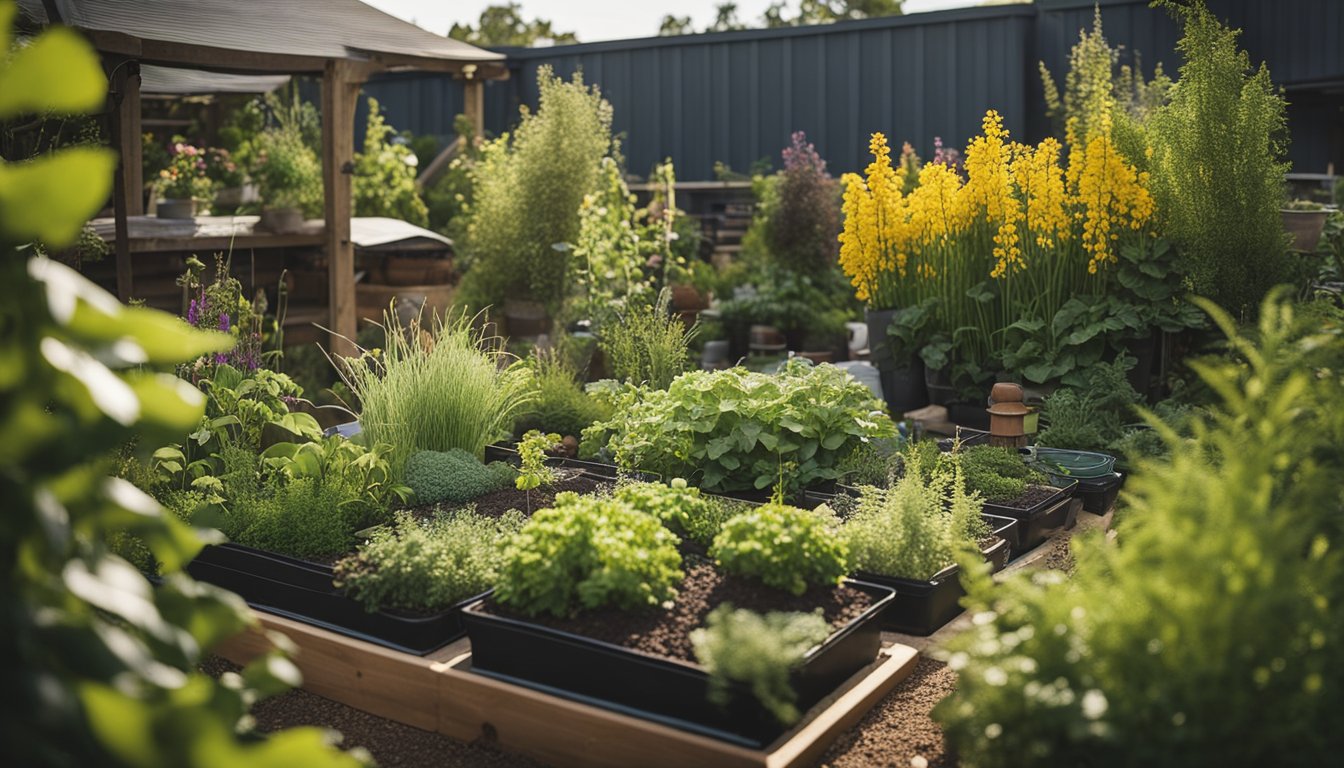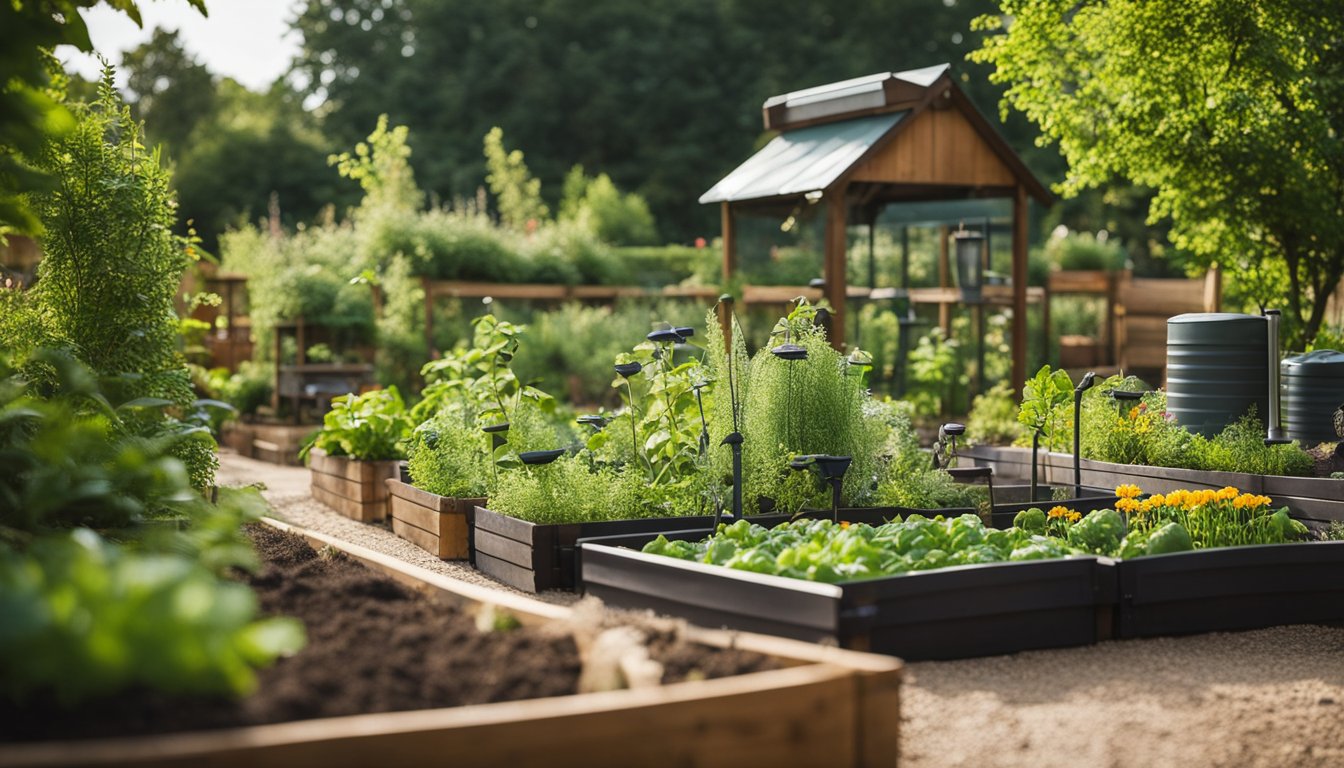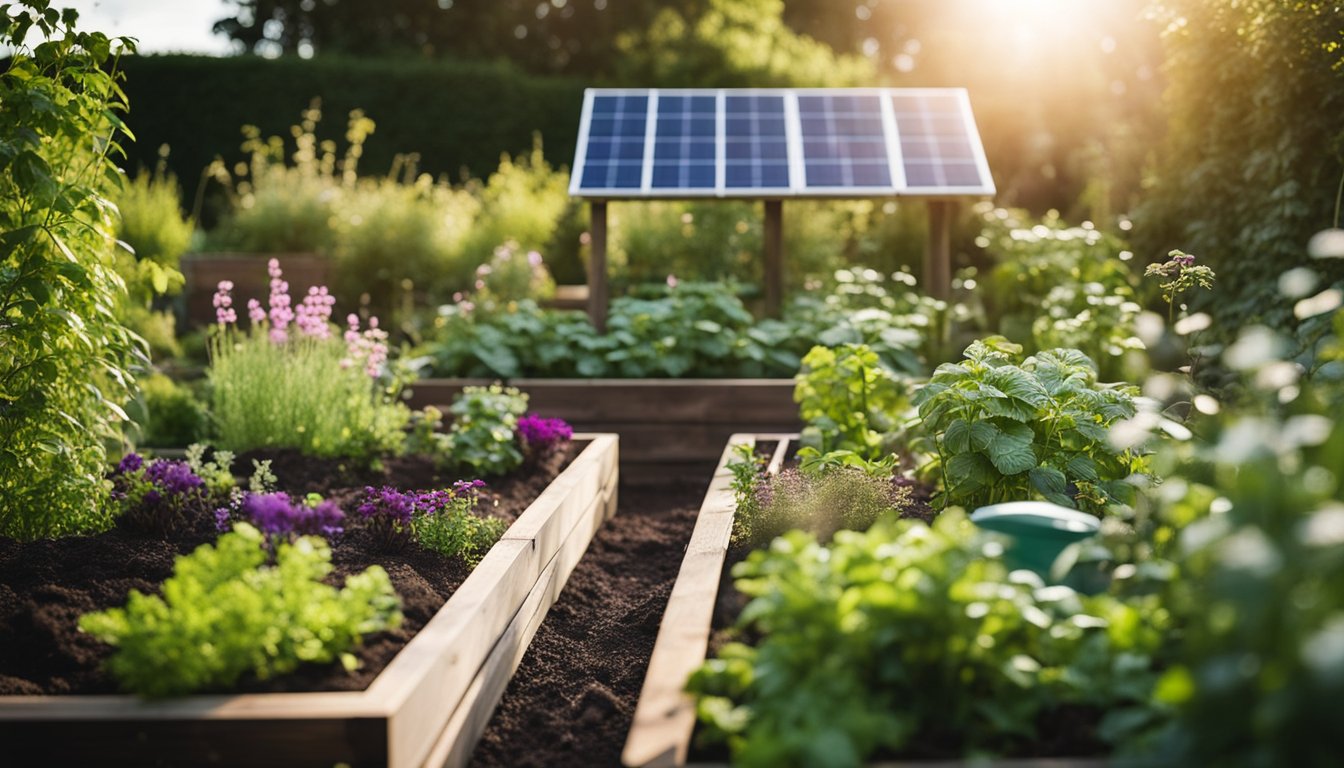Late updated: 17 Jul 2024 12:07
Written by: Eleanor Hartman
Sustainable Garden Design Tips For UK Homes: Simple Strategies For Eco-Friendly Landscaping
Creating a sustainable garden in your UK home is not only beneficial for the environment but also rewarding for your personal well-being. Switching from mains to rainwater can significantly reduce your carbon footprint and water usage. Implementing practices such as using a water butt or a watering can instead of a hosepipe helps in conserving water resources.

In addition to water conservation, improving soil health is crucial for a thriving garden. Healthy soil not only traps carbon but also supports a diverse ecosystem of microorganisms that are essential for plant growth. We can achieve this by incorporating organic matter and using natural composts to nourish the soil.
Incorporating mixed borders with trees, shrubs, and perennials can enhance biodiversity. These plant combinations provide habitats for birds and insects, contributing to a balanced ecosystem. Growing your own food and flowers is another sustainable practice that reduces dependency on commercially shipped produce, thereby lowering your overall carbon emissions.
Key Takeaways
- Embrace rainwater harvesting to minimise water use.
- Improve soil health with organic compost and natural methods.
- Create diverse plant borders to support local wildlife.
Fundamentals of Sustainable Garden Design

Our approach to sustainable garden design focuses on integrating native plants, enhancing biodiversity, and utilising eco-friendly materials. By applying these principles, we create gardens that thrive naturally and support local wildlife.
Understanding Sustainable Gardening Principles
Sustainable gardening revolves around reducing waste, conserving resources, and promoting biodiversity. Key principles include water conservation. We recommend using systems like a water butt to collect rainwater, which can be used for watering plants.
Another essential aspect is soil health. Healthy soil supports strong plant growth and houses many beneficial organisms. Incorporating compost helps restore soil nutrients and reduces the need for chemical fertilisers. In essence, by prioritising natural processes, we create gardens that are both functional and ecologically beneficial.
Choosing Plants for a Greener Garden
Selecting the right plants is crucial for a sustainable garden. Native plants are particularly important. They are adapted to local conditions and require less water and maintenance. Furthermore, native plants provide food and habitat for local wildlife, fostering biodiversity.
We also recommend choosing perennials over annuals, as they require less effort and resources year on year. When planning, take into account the variety of heights and types of plants. This can include trees, shrubs, grasses, and flowers. Varying plant types not only improve aesthetics but also create a balanced ecosystem within your garden.
Incorporating Eco-Friendly Garden Materials
Utilising eco-friendly materials significantly reduces the environmental impact of gardening. Recycled materials, like reclaimed wood or recycled plastic for garden furniture, reduce waste. Natural materials such as stone or sustainably sourced timber can also offer durability and minimal environmental footprint.
Mulching is another practice that benefits the garden. Organic mulch, like bark or leaf litter, helps retain soil moisture, reduce weeds, and eventually decomposes to enrich the soil. Paths made of permeable materials, such as gravel or permeable pavers, allow rainwater to filter through, reducing runoff and improving local water quality.
By focusing on these fundamental principles and practices, we can transform gardens into ecological havens that support the environment.
Practical Sustainable Gardening Techniques

Incorporating practical sustainable gardening techniques can make a significant difference in reducing our environmental impact. The following tips focus on efficient composting, conserving water, and managing pests naturally.
Composting and Soil Health
Composting is essential for enhancing soil health. By transforming kitchen scraps and garden waste into nutrient-rich compost, we can improve soil structure and fertility. Composting reduces the need for synthetic fertilisers, promoting a more natural and sustainable approach.
Using a compost bin or heap, layer green materials like vegetable scraps with brown materials such as dried leaves. Regular turning aerates the compost, speeding up decomposition. Composted soil is teeming with beneficial microorganisms, which are crucial for plant health and growth.
Mulching with organic materials, such as leaves or straw, further improves soil health. It retains moisture, supresses weeds, and adds nutrients. Healthy soil that is rich in organic matter supports a thriving ecosystem, reducing the need for chemical inputs.
Water Conservation Strategies
Water conservation in gardening starts with utilising rainwater. Installing a water butt collects rainwater from rooftops, providing a sustainable water source for plants. Using rainwater reduces reliance on mains water, which has a higher environmental cost.
Drip irrigation systems are another effective method. They deliver water directly to the plant roots, minimising evaporation. Additionally, watering in the early morning or late evening reduces water loss due to evaporation.
Selecting drought-tolerant plants, such as native perennials and wildflowers, is also beneficial. These plants require less water and are more adapted to local conditions. Grouping plants with similar water needs simplifies watering schedules and ensures efficient water use.
Natural Pest Management
Avoiding chemical pesticides is vital for sustainable gardening. Instead, we can use natural pest control methods. Introducing beneficial insects like ladybirds and lacewings, which prey on pests, helps maintain a balanced ecosystem.
Planting companion plants can deter harmful insects. For example, growing marigolds near vegetables can repel nematodes. Neem oil and other organic sprays act as natural pesticides without harming beneficial insects or soil health.
Physical barriers, such as row covers, protect plants from pests while allowing sunlight and rain through. Keeping the garden clean and removing dead plant material reduces sites where pests can thrive. These methods promote a healthier, more resilient garden without relying on chemicals.
Frequently Asked Questions

In this section, we address common concerns about creating and maintaining a sustainable garden in the UK. We'll cover everything from cost-effective strategies and plant selections to educational integration in schools.
What are some cost-effective strategies for creating a sustainable garden at UK homes?
One key strategy is to use recycled materials for garden beds and paths. Another is to collect rainwater using water butts, reducing reliance on the mains supply. Composting kitchen and garden waste is another cost-effective practice that enriches soil naturally.
Which plants are best suited for a low-maintenance, sustainable UK garden?
Native plants are generally best as they are well-adapted to local conditions. Hardy perennials such as lavender, yarrow, and sedum require minimal maintenance and provide habitats for pollinators. Consider using drought-resistant plants to reduce watering needs.
What are the initial steps for beginners wanting to start a sustainable garden in the UK?
Start by assessing your garden’s soil type, sunlight, and moisture levels. Plan your garden layout to maximise natural sunlight and space efficiency. Begin with easy, low-maintenance plants, and incorporate composting and rainwater harvesting from the get-go.
How can schools integrate sustainable gardening into their curriculum?
Schools can start small garden projects, teaching pupils to grow their own vegetables and herbs. Incorporating composting and rainwater collection can provide practical lessons on sustainability. These activities can be integrated into science, environmental studies, and even art classes.
How can one design a British garden that is both sustainable and aesthetically pleasing?
Using a mix of native plants and seasonal flowers can create a visually appealing garden. Paths made of recycled materials and the inclusion of water features that use harvested rainwater can enhance the garden’s beauty sustainably. Group plants by their water and light needs to maintain health and appearance.
What are the best practices for maintaining a sustainable garden throughout the changing UK seasons?
Regular mulching helps retain moisture during dry periods and insulates roots during frosts. Rotate crops and plants annually to maintain soil health. Use organic pest control methods to protect plants without harming the environment. Regular pruning ensures plants remain healthy and productive across seasons.